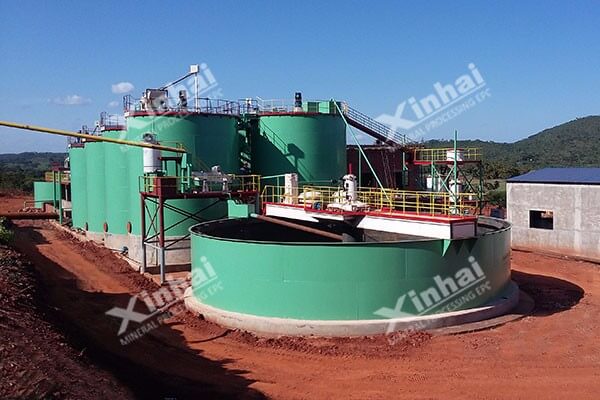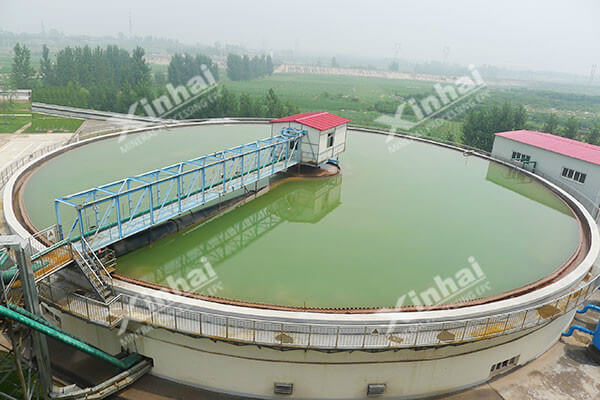

Warm Tip: If you want to know more details about equipment, solutions, etc, please click the button below for free consultation, or leave your requirements!

Sludge thickener is the most widely used equipment in the mineral processing plant, in which every concentration and dewatering process need sludge thickeners. However, during the actual operation process, the failure rate of sludge thickener can reach 37%, so in order to reduce the failure rate of sludge thickener, daily maintenance is the key point.
The daily maintenance of sludge thickener requires full-time staff to perform daily inspections, machine lubrication, regular maintenance. In addition, the maintenance personnel should be able to handle emergencies; all qualified maintenance personnel can ensure the sludge thickener works stably.
Daily inspection is an indispensable process for large-scale equipment. It is necessary for the on-the-job personnel to understand the structure, performance, specifications, names, and functions of various components. They are familiar with the entire process of equipment operation, to carry out inspection and maintenance operations.
(1) Check the bolts of all parts of sludge thickener on a daily basis to see whether there are any rust and broken screws.
(2) Check whether the hydraulic cylinder has leakage phenomenon; whether the bearing has deformation phenomenon; whether the transmission gear has broken teeth, whether the tooth plate has broken teeth or rust.
(3) Check whether the sludge thickener drive chain is tight; the scorpion has deformation or breakage.
(4) Check the oil level, whether it is above the middle of the oil window. If it is lower than the middle of the oil window, it is necessary to fill the oil in time.
(5) Check the bearing temperature, no more than 80 °C; the motor temperature doesn’t exceed 65 °C; the temperature of the center mixing reducer and whether there is oil leakage.
If serious problem occurs in the above daily inspection, the machine needs to be shut down and problems must be reported to the superior.

Lubrication management of sludge thickener is the key point. The lubrication of sludge thickener should be checked correctly, reasonably and in timely manner. The oil level of fuel tank should be checked every day and replenished if it’s necessary. The lubricating oil used in different lubrication time of sludge thickener is different and the oil is also changed according to the seasons.
(1) The oil for hydraulic motor reducer is N150-220 industrial gear oil.
(2) The oil used in the gearbox is N150-460 industrial gear oil.
(3) In the hydraulic station, the summer oil is N46 anti-wear hydraulic oil, and the winter oil is N32 anti-wear hydraulic oil.
Each lubrication point needs to be replaced with new oil after the first refueling operation, and the lubricant should be replaced every six months. It’s usually necessary to check the oil level daily and replenish oil in time.
Maintenance Items:
(1) Regularly repair the sludge thickener fasteners, drive racks, and slide.
(2) Regularly overhaul the track of turning and lifting, ensure the diameter error of the center circle is ≤±5mm, and ensure the top surfaces of the two sections of are on the same plane (the error is not more than 0.5mm, and the unevenness of the track at each end cannot exceed 1.5mm) ).
(3)Regularly check the wear of the support rollers, roller bearings and transmission gears. If necessary, change the surface or replace it directly.
(4)Regularly check the slurry pipe, elbow, center barrel, trough frame, transmission frame, sludge thickener truss and replace the damaged parts in time.
(5)Regularly check the changes of running motor ammeter. If the change is obvious, please check the operation of each part in time.
Maintenance Cycle:
Maintenance Category | Maintenance Cycle (h) | Repair Content |
Minor repair | 4000 | Minor Repairs Content Drain the mortar in the sludge thickener and check swash plate and inner plate of the tank for damage; Check whether the maintenance mechanism is in good condition; Check all welds are in good condition; |
Overhaul | 8000
| Check the fastening anchor bolts; Check outer surface of the tank shell for oil leakage; Clean up dirt and debris on the track; Clear the leakage of pipeline valves and joints; Check the bite of the gear and roller; |
Sludge thickener Emergency Handling Method:
Sludge thickener Common Fault Problems and Solutions
Common Malfunctions | Emergency Treatment |
"Compression" Failure | “Pressure” is mainly caused by blockage of the slurry line or long-term stoppage. It is necessary to stop the feed, and then rinse the discharge port with water of 0.5~0.8MPa. |
Overflow Water Quality Deteriorates | Adjust level of the zigzag dam; Concentrated sloping plate has ash accumulation, requiring water to rinse; There are floating objects in the overflow pool and cleaned up. The amount of ash entering the slurry becomes large and needs to be adjusted into slurry. |
Large Material Concentration | The discharge port can be adjusted appropriately to increase the displacement |
Different Sound of Pressure Bearing | Need to stop the inspection in time to ensure all lubrication points are properly lubricated. |
The oil pump turns wrong | It may be the oil pipe has air in, the direction of rotation needs to be changed. |
In the daily operation of sludge thickener, emergencies often occur. If not handled properly, the overall efficiency of the processing plant will be affected. Therefore, it’s necessary for the on-the-job personnel to find problems and deal with problems in time.
In order to ensure the normal operation of the sludge thickener in the processing plant and maintain its normal working efficiency, the maintenance and inspection of sludge thickener is indispensable, and the requirements for the on-the-job personnel are also extremely strict.
Last: 2 Factors Affect Grinding Efficiency
Next: 4 Flotation Machine Maintenance and Overhaul Processes
16 Advantages of Efficient Improved Thickener

 3071
3071
2Introduction of Titled Plate Thickener?
 0
0
 2843
2843
34 Aspects of Thickener Daily Maintenance In the Mineral Processing
 0
0
 3551
3551
